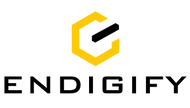Digital Marketing Glossary
Digital Marketing Glossary
Discover our digital marketing jargon buster! If you’re trying to find the digital marketing terms ultimate guide, you have! Check below for digital marketing terms every business and online marketer should know.
An A to Z Of All Useful Digital Marketing Terms
- A/B testing: Creating two versions of something to test which will perform better. A is called control, which is the standard or normal version, where B you change a particular variable to test the effectiveness of the new piece.
- Ad: A paid method of online advertisement (commonly on Google or social media platforms) that displays information and images to convince the user to click through to the corresponding web page.
- Ad fatigue: When your ad is overexposed to the same users and the clicks and conversions drop, your ad’s effectiveness is lowered. Most common on Facebook.
- Algorithm: In digital marketing, an Algorithm is a complex set of rules that a platform (like Google, Facebook, or Instagram) uses to operate.
- Alt-Text: Stands for alternative text. Alt-text is the text that an image contains and presents only if the image isn’t viewable.
- Attribution: A process of determining which point in the marketing process is responsible for a customer’s conversion. Often used in advertising.
- Audience: The demographic you are targeting with your business to make sales. It’s common to have more than one audience.
- Audit: A full scope view & report of how something is performing (often a website). Will provide an in-depth look at every aspect, indicating strengths and areas to improve.
- Backlink: A link from one website to another, which is used for credibility and improving SEO.
- Blog: A page or collection of web pages that consist of information around a subject. Often personal, blogs are used to convey information about a person, company, or product to customers and leads.
- Bounce rate: Used to describe how many visitors to your webpage leave immediately after landing on your page.
- Call to Action: A call to action (or CTA) is a word or phrase that convinces your audience to take an action. Such phrases can include “Click here to finish your order”, buy today”, and etc.
- Campaign: A multiple effort activity in marketing, usually about ads or advertisement, to achieve a preset goal.
- CTR: CTR (or Click Through Rate) is a percentage of people who land on your landing page and follow through with your Call to Action and continue to the next part of your marketing funnel.
- Conversions: The act of a user or lead completing the desired action, such as a lead clicking the “buy now” button and purchasing your product.
- CVR: CVR (or conversion rate) is the percentage of times the average user will convert from an ad they have clicked on.
- Cookie: A small digital file that is stored on the user’s computer after they visit a site, commonly used to track information. Cookies can be temporary or permanent, and are very often harmless and used to improve customer experience.
- Copy: Copy (or ad copy, or copywriting) is the text of an ad, landing page, or email.
- CPA: CPA (or Cost per Acquisition) is the price it costs your business to convert a stranger into a paying customer.
- CPC: CPC (or cost per click) is the amount a business must pay an advertiser every time the ad gets a user click.
- CPM: CPM (or cost per thousand) Is the amount a business must pay per 1,000 impressions for their ad (on a social media platform).
- Creative: The imagery of an advertisement, or sometimes video.
- Demographics: Statistical data that categorizes a specific group of people around common interests (example: age).
- Email List: An email list is the subscribers you have on your email list.
- Google AdWords: Google AdWords is Google’s PPC advertisement platform.
- Google Analytics: Google Analytics (or GA) is a software platform used to track a variety of digital marketing statistics, commonly relating to a website.
- H tags: Commonly referred to as a header tag in Copy or HTML code.
- Impressions: The number of times an ad is seen by potential customers.
- Index: The process of gathering and recording all pages in Google’s servers.
- ROAS: ROAS (or return on ad spend) refers to the value a business receives from the money they invest in digital advertisement.
- ROI: ROI (or return on investment) is the benefit received from a certain investment in comparison to the cost of that activity.
- Search Engine: A platform where users can search the internet with queries.
- SEO: SEO (or search engine optimization) is the process of improving your website, and thus, the rank it has in Google.
- Sitemap: A structured list of pages within a website.
- Spider: A bot that search engines use to crawl websites and index them into their database.
- Value Proposition: A statement promising a service, good, or feature that a customer will benefit from after their purchase.
- Variable: A metric that often can be measured, and is subject to change.
- Web Page: A singular web page of a website.
- Website Rank: How high your website is “ranked” in Google (example: The very first website in Google that isn’t an ad is ranked 1st).
- WordPress: A free and easy-to-use website creator.
A to Z of digital marketing term and definitions of digital marketing jargon! If you’re curious what a certain phrase or acronym means, check above!
What We Offer


